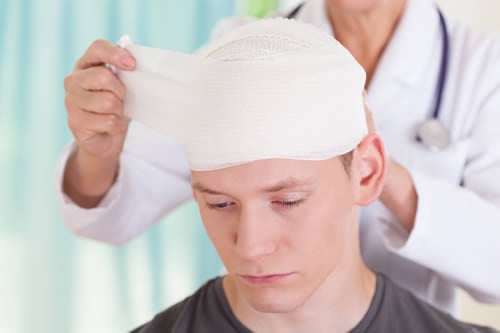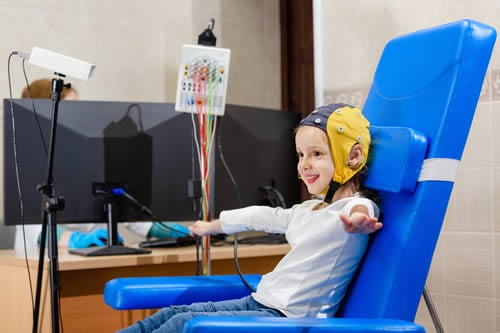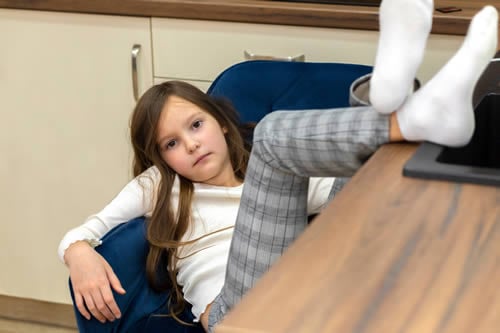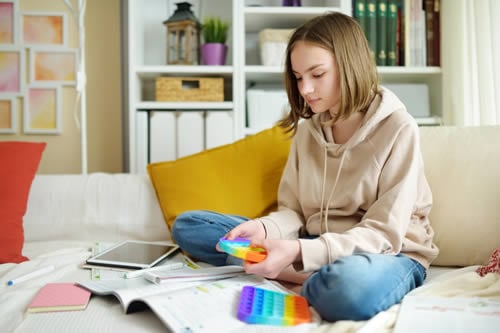It’s often the case that people who work with children with special needs have some personal experience with SEN themselves. It may be that they have family members with a condition like autism or dyslexia, for example, or perhaps they have friends with hearing impairment or cerebral palsy. Seeing at close-quarters how people struggle with differences and disabilities can be part of the reason they want to work in this field and support others.
In addition to her work as a primary school teacher, Headteacher and SENCO, tutor Elizabeth has experience of both developmental disorders and physical disabilities. She has a grown-up son with ASD and profound learning disabilities while her husband suffered a severe brain injury many years ago and remains severely disabled.
Someone Can be Completely Changed by a Head Injury

“My husband, Nigel, had a motorbike accident at the age of thirty-four,” she recalls. “I had just had a baby and had three children under the age of five. It was my first introduction to the world of disability. Before the accident, he was a teacher – a strong character with strong opinions about everything. He played rugby, the guitar and was good-looking and confident. He survived but the person I knew died in the accident.”
Nigel was in a coma for a while and his injuries were so bad that Elizabeth barely recognised him at first. Over the months that followed, he had to relearn to walk, though one side is paralysed as if he’d had a stroke, and endured skin grafts and operations to reconstruct his jaw. These days, he still mixes his words up and has no executive function but even so, Elizabeth maintains, he is generally content and recognises everyone in the family.
She believes that the tragedy has shown her the importance of kindness. “You might not know what some people are going through till you talk to them,” she says. “People with head injuries often can’t retain information so you end up doing the same thing again and again. Nigel’s accident has taught all of us to be more patient.”
A Different Impact on Children

When it comes to children who have suffered a head injury, the effects are usually slightly different, says Dalia Chowdhury, Education Services Manager with charity The Child Brain Injury Trust. The main factors, she explains, are the age at which the injury happened and the part of the brain that was affected.
Because children are constantly acquiring new skills as they develop and grow, brain damage may impair an ability that was already established – walking or talking, for example – or impact the child’s ability to learn something which they can’t yet do. This can be anything from maths to knitting.
Behaviour is Always Affected

“But no matter what the nature of the injury was, the main impact for children and adults is behaviour,” she emphasises. “This might be because of the part of the brain that was affected but can also be because of the after-effects of the injury – if someone has trouble sleeping or moving, for example, or if they’re in pain, it obviously has an impact on how they feel.”
Many of the difficult behaviours brought about by head injury, Dalia explains, are those you might find in children with conditions like autism and ADHD. “They might not behave appropriately and have trouble understanding consequences. There might also be risk-taking and difficulties with concentration, memory, and executive skills. They might be sensitive to sensory input or have problems with visual or auditory processing.”
Problems Emerge in Adolescence

Surprisingly, she says that although some of these behaviours are common in all teenagers to some extent, they are usually more pronounced in a teenager who’s had a head injury. In addition, if the injury was some years earlier, everyone might assume that the child has fully recovered, not realising that the behavioural impact is surfacing in adolescence. “Children might be trying their absolute best but be misunderstood as ‘selfish’, ‘lazy’ or a ‘clown’,” she points out.
Where teachers and tutors are concerned, strategies that might be used for a neurodiverse student are often useful, Dalia advises. Fidget toys might help with focus, for example, while ear defenders can reduce noise. Repetition and reinforcement may help a child with memory problems to retain information. “That’s the amazing thing about the brain,” she concludes. “The information always wants to find a way of getting through. It’s like making a journey on a motorway or taking side-roads instead.”
The CBIT runs workshops for parents and professionals and can mediate between schools and families to ensure a child with brain injury is properly supported in the classroom.




